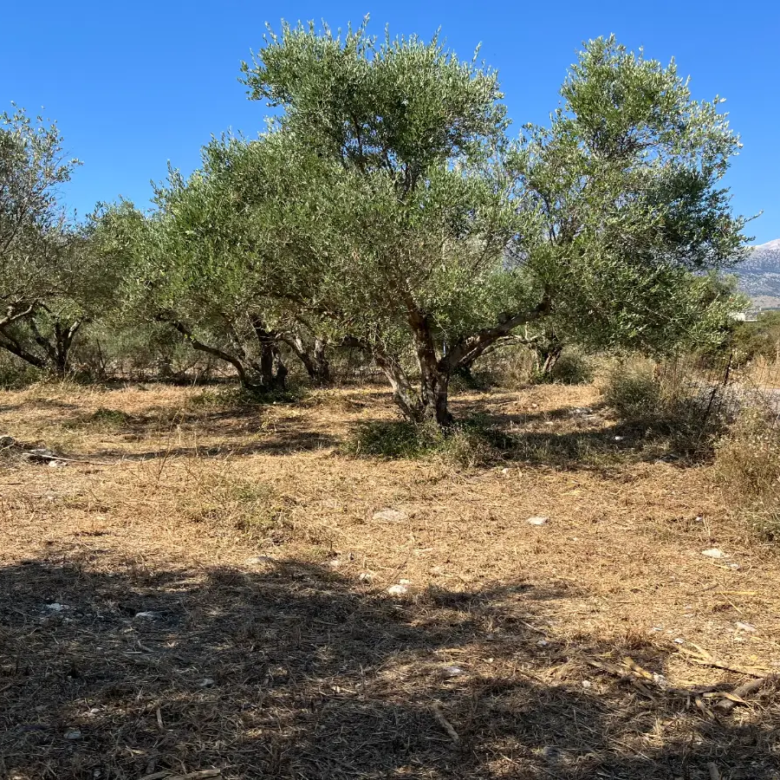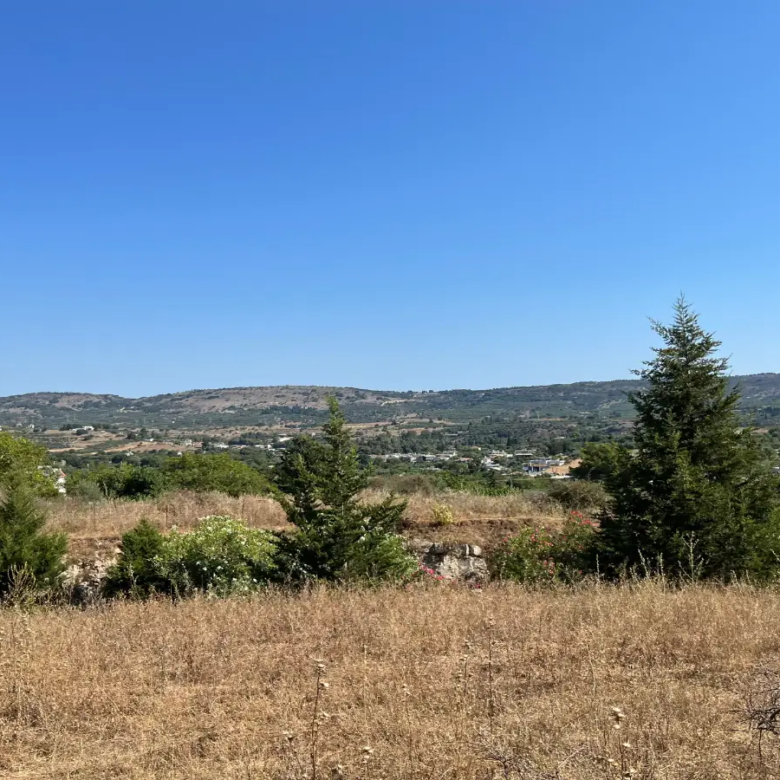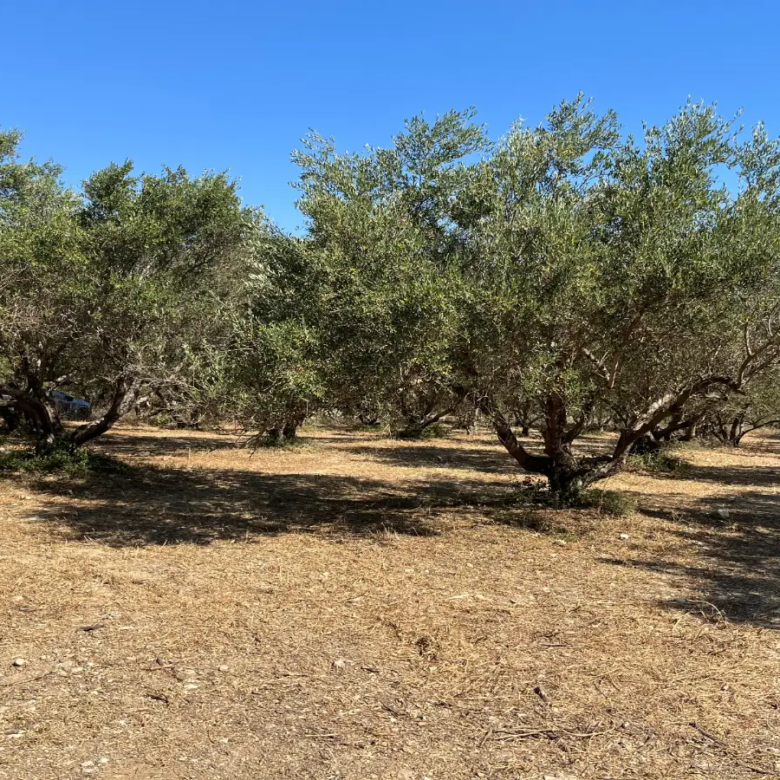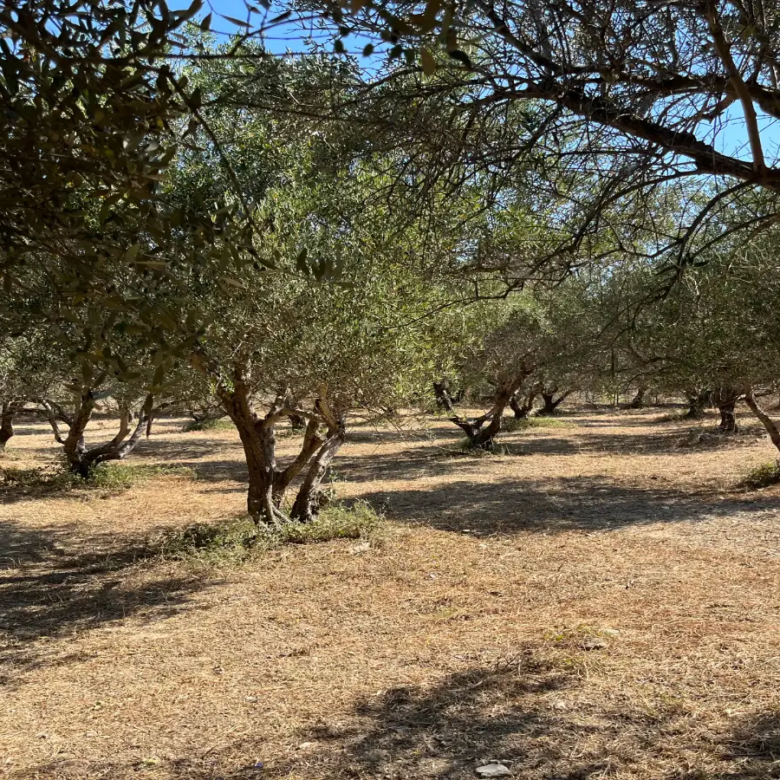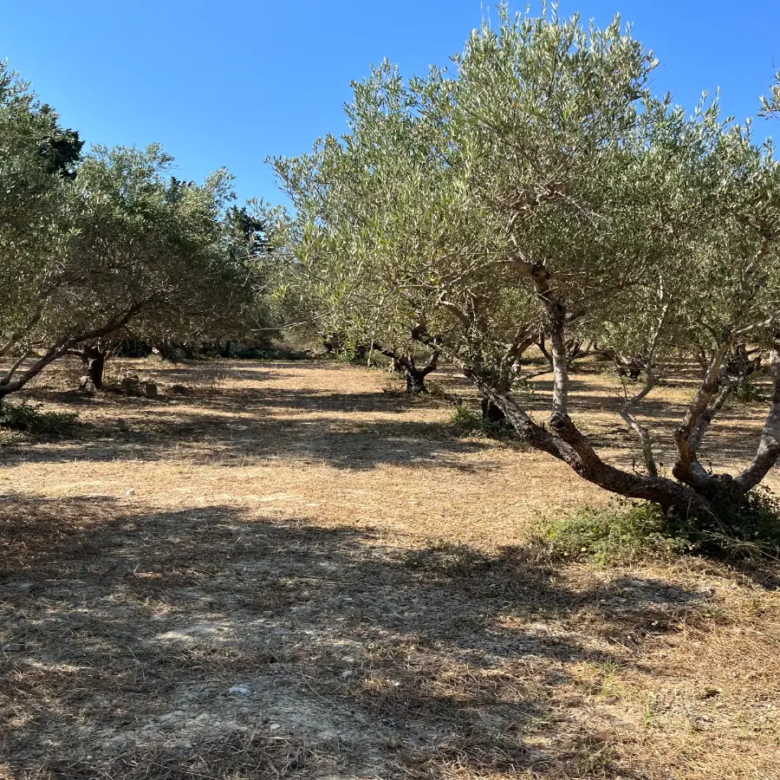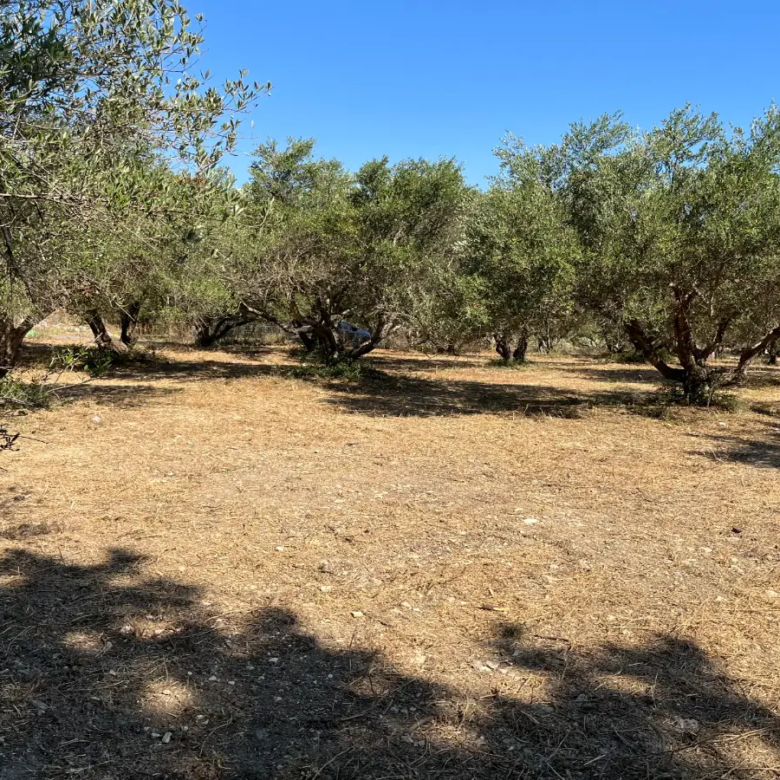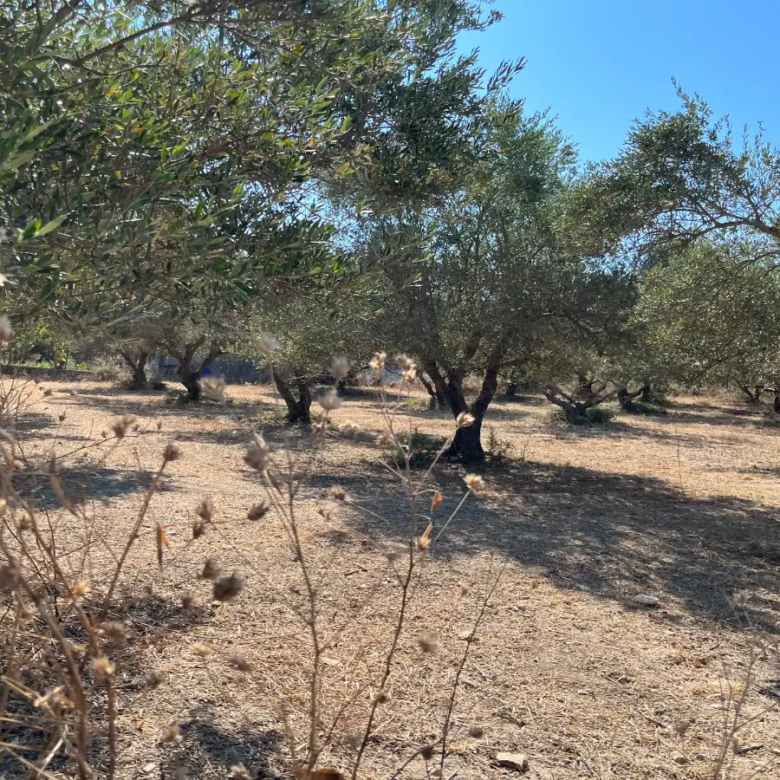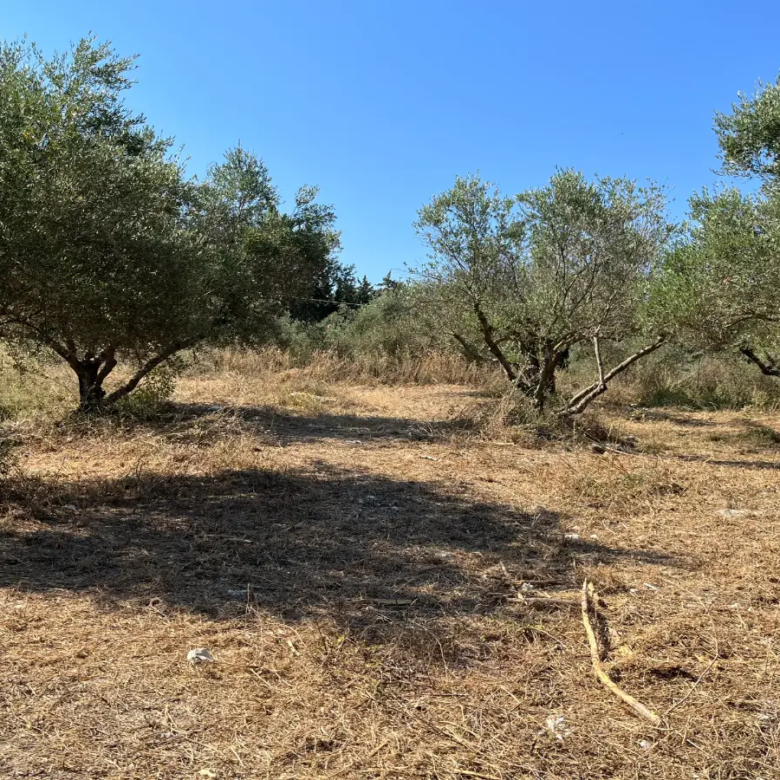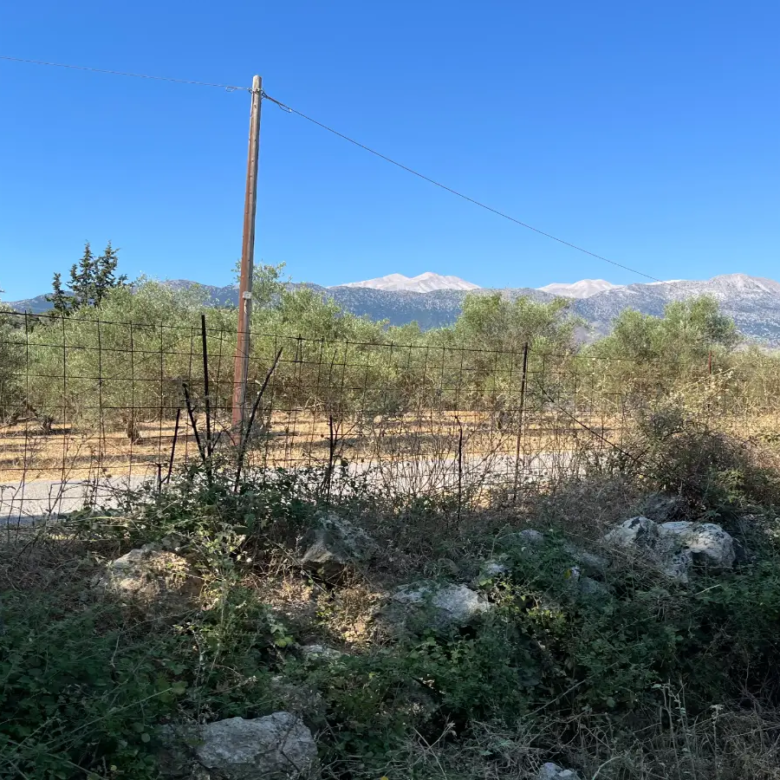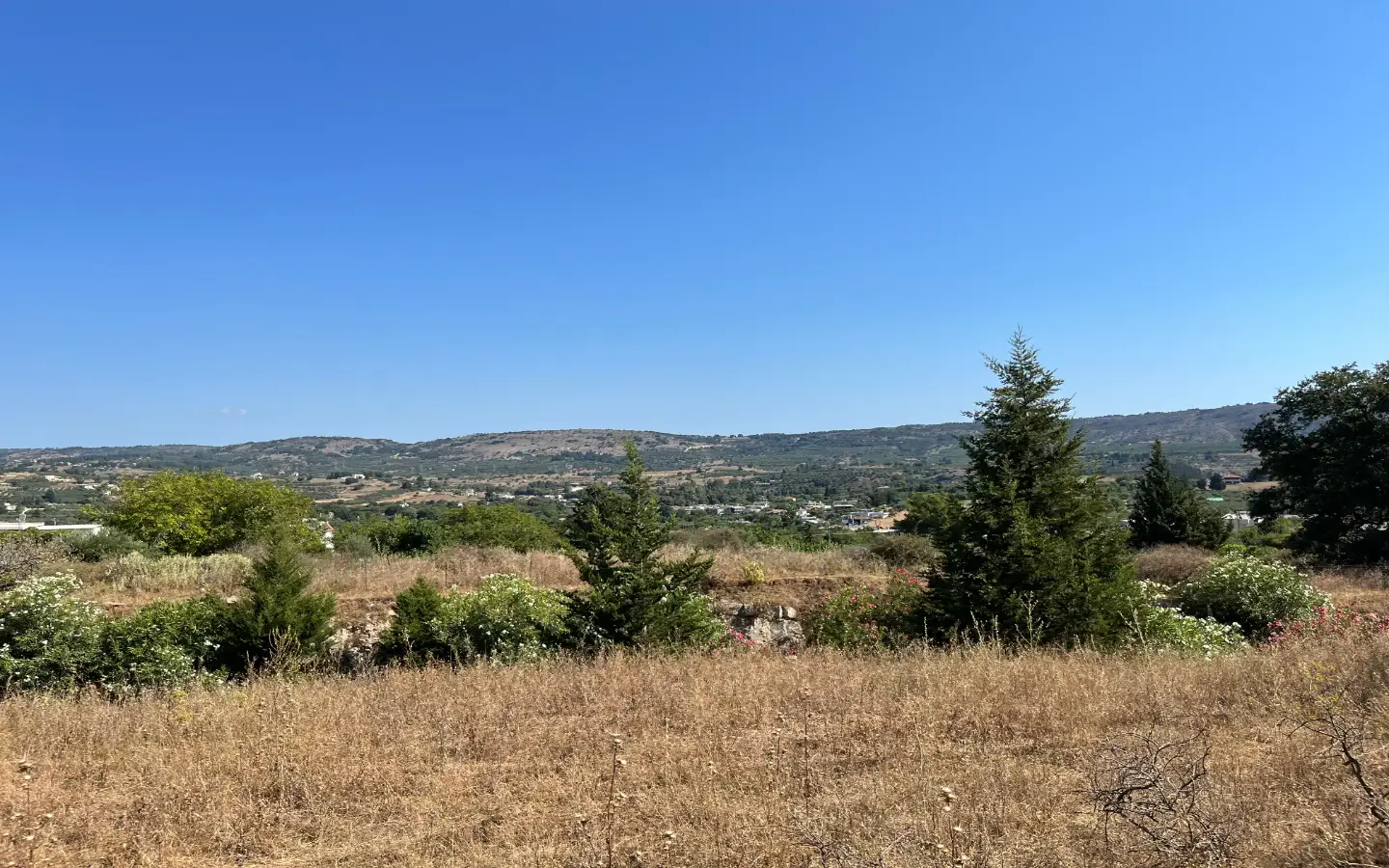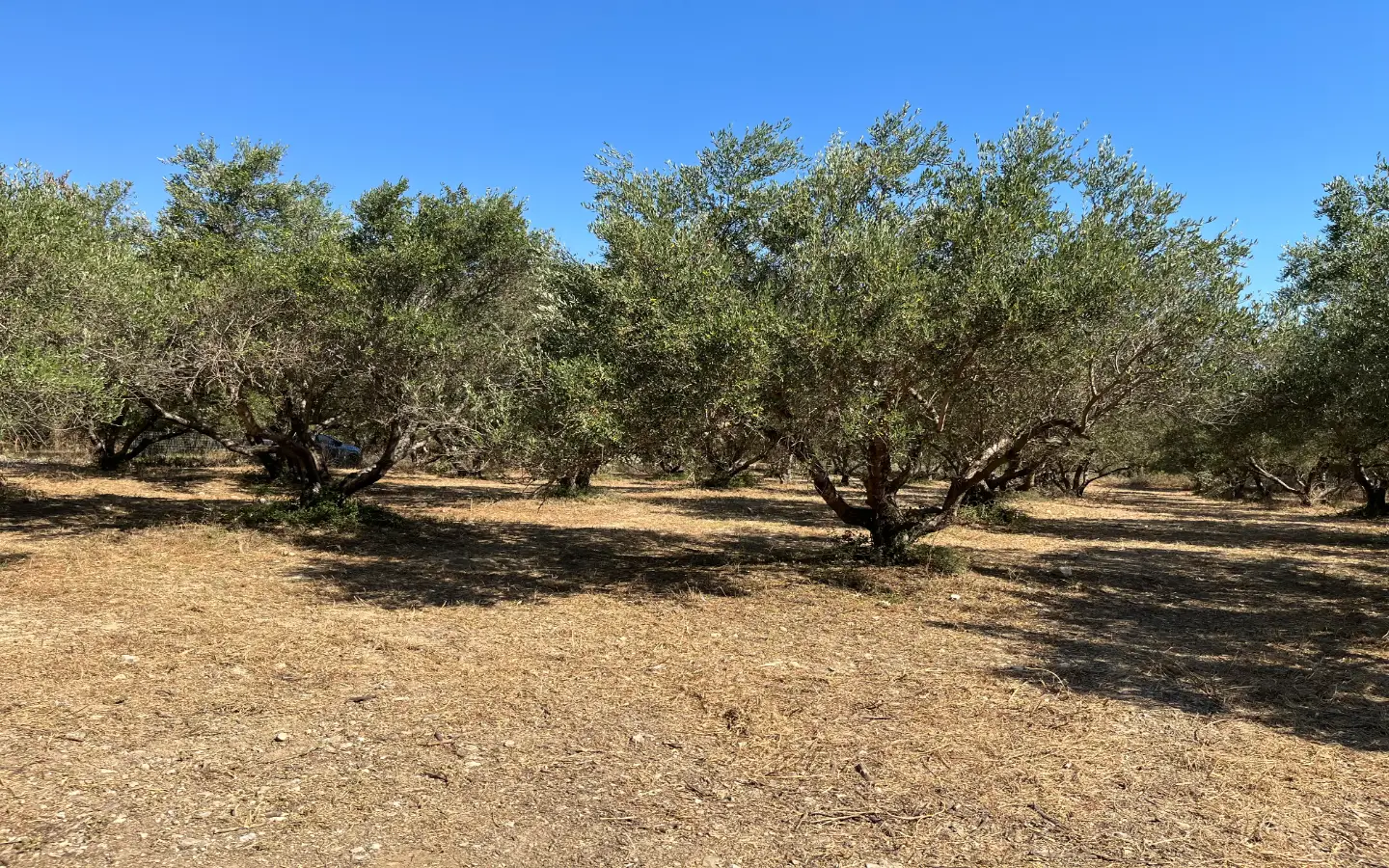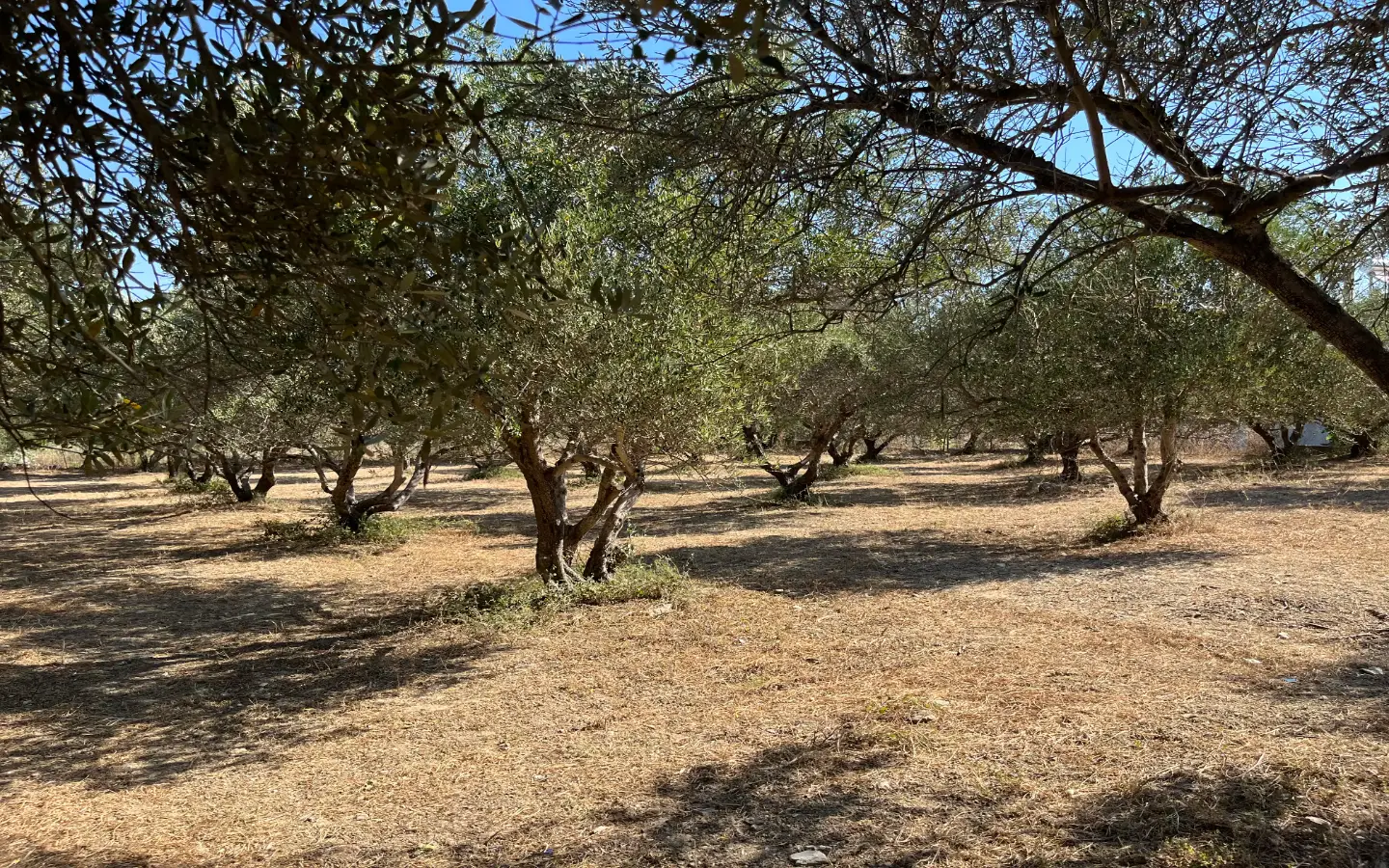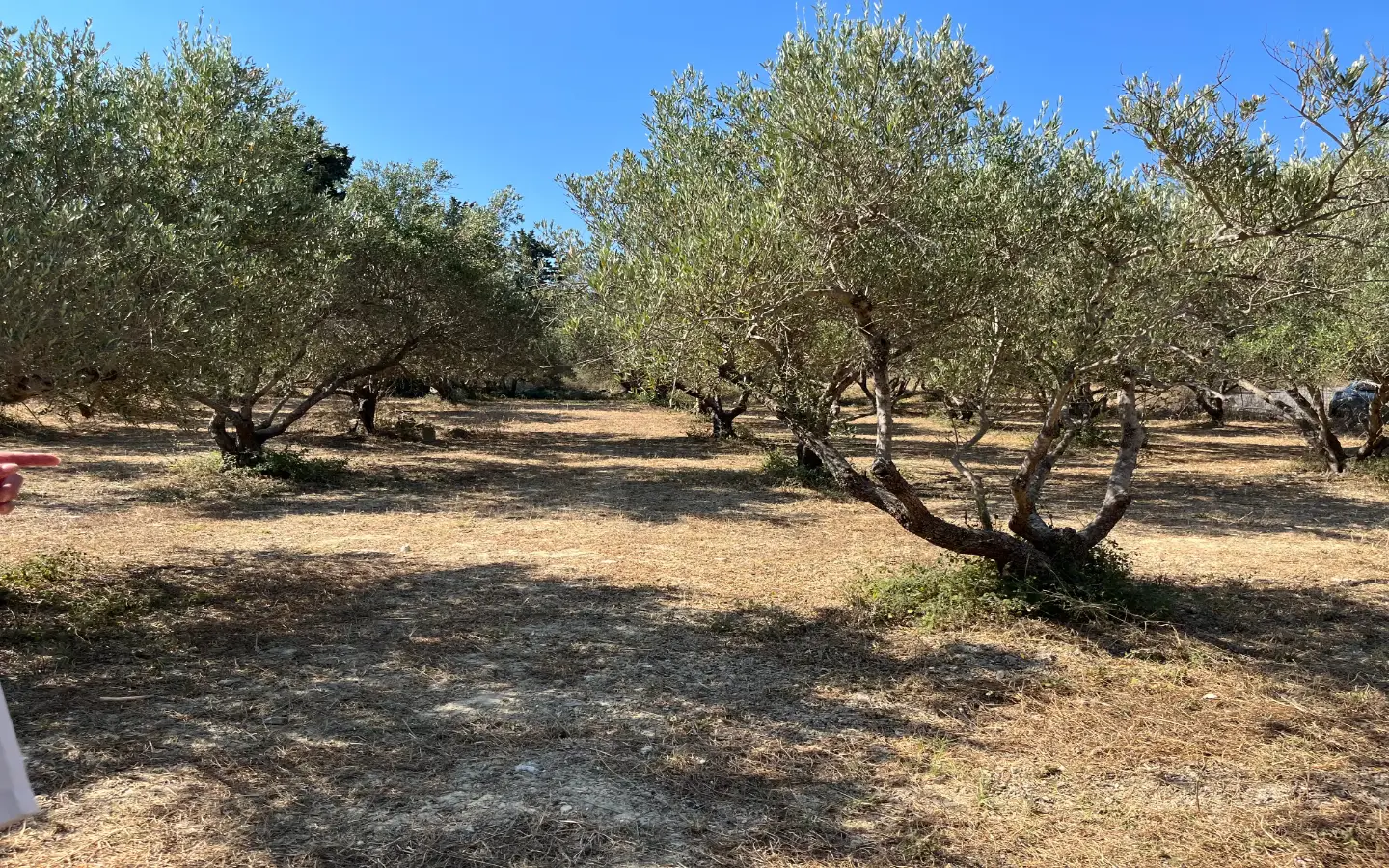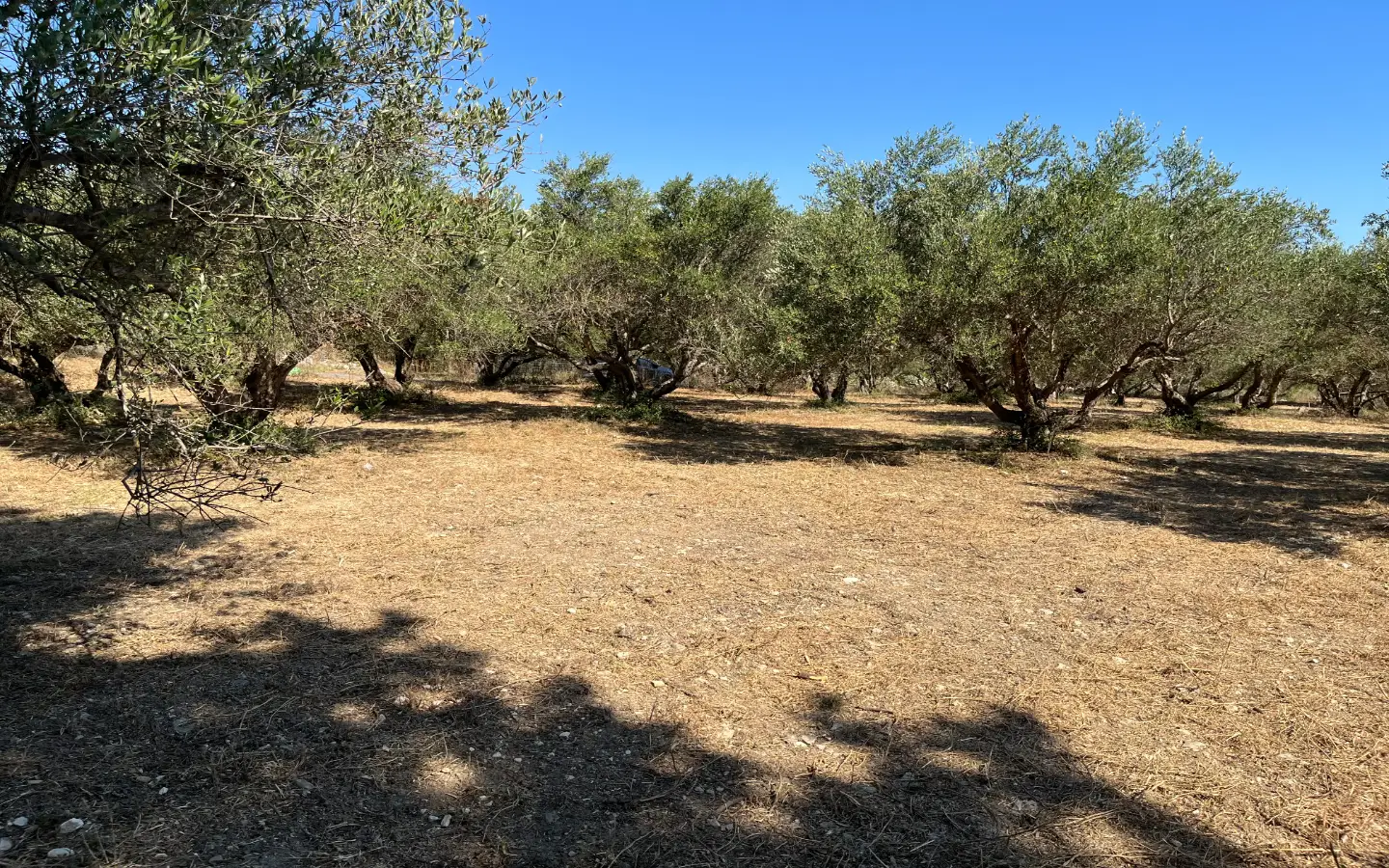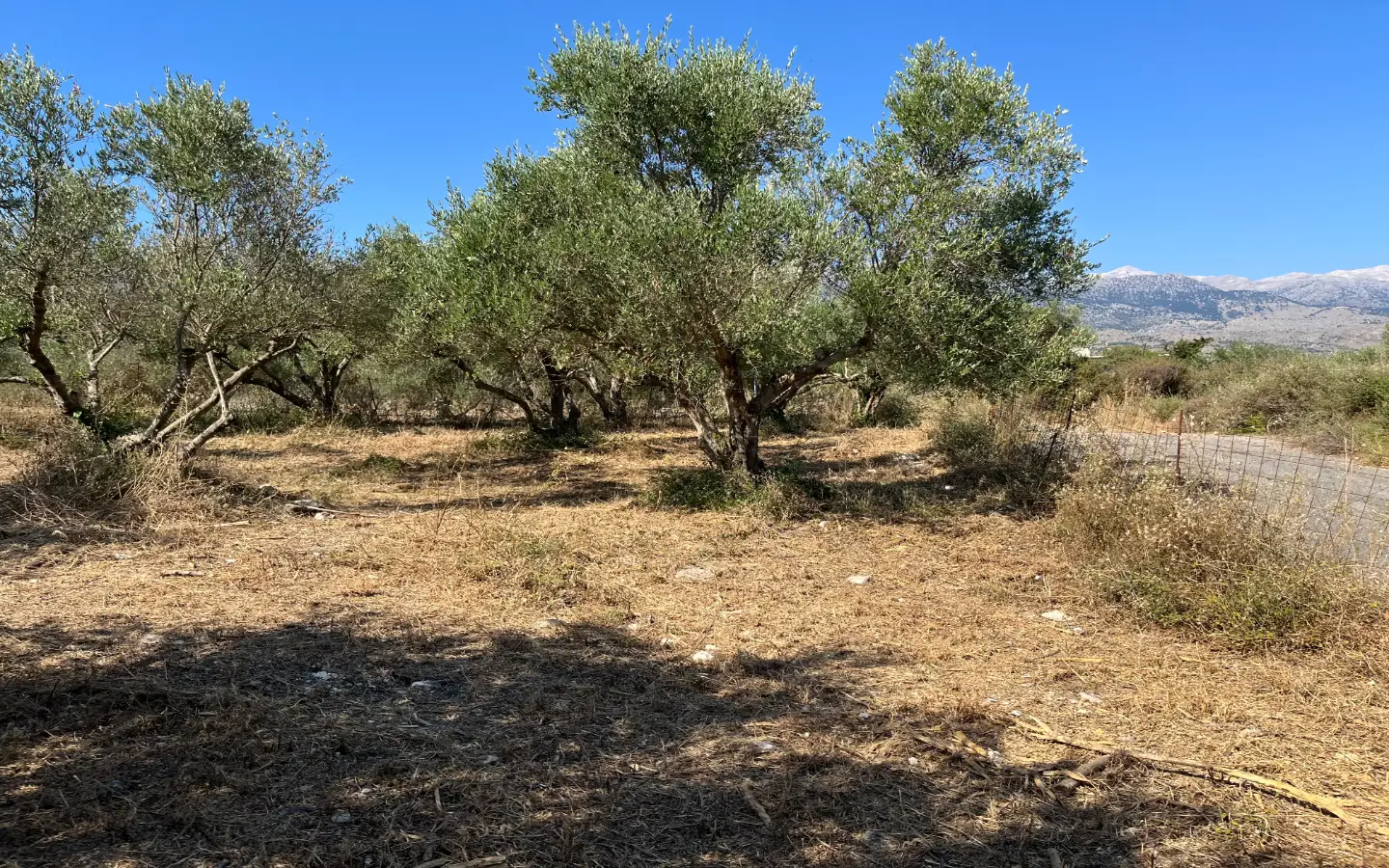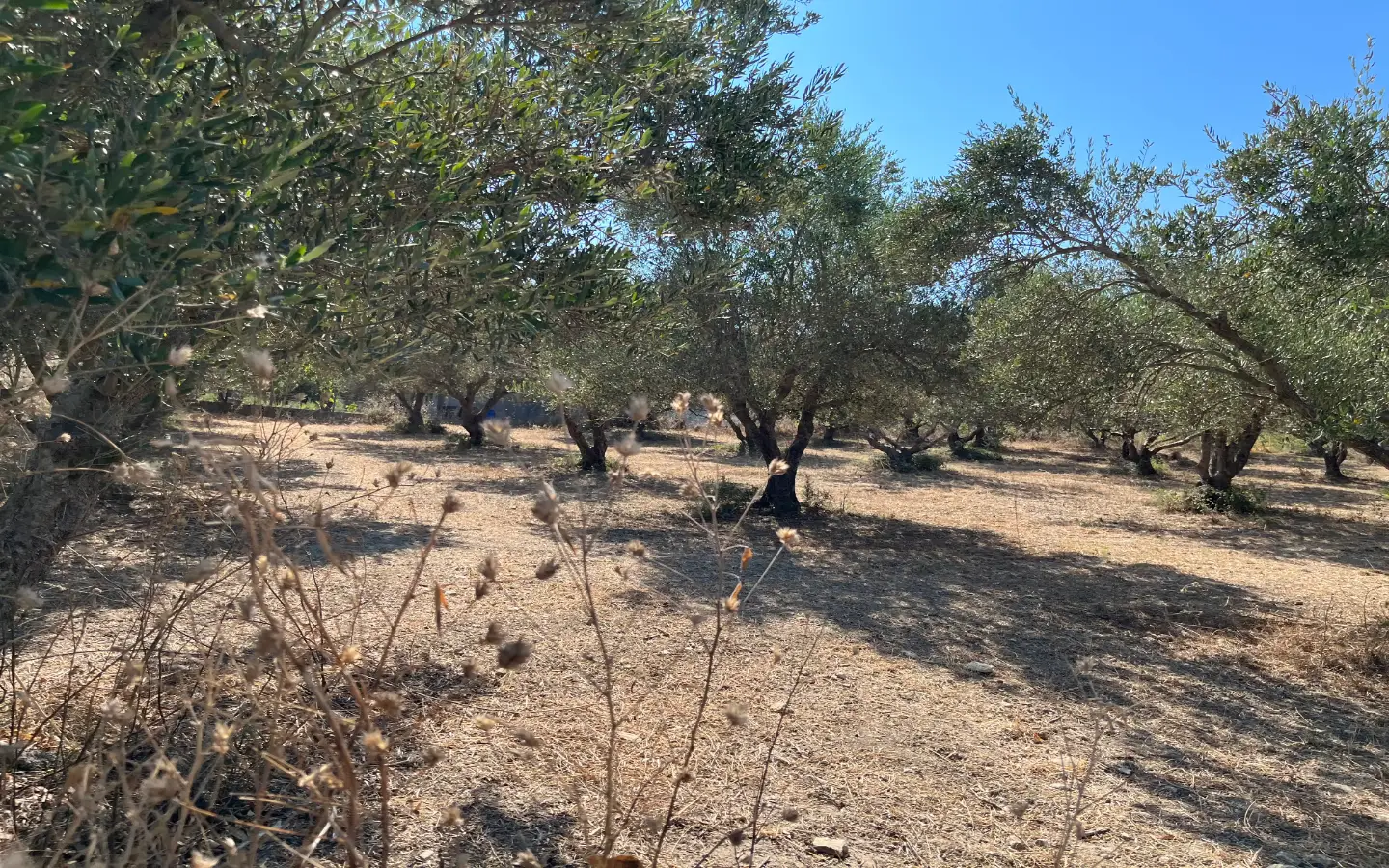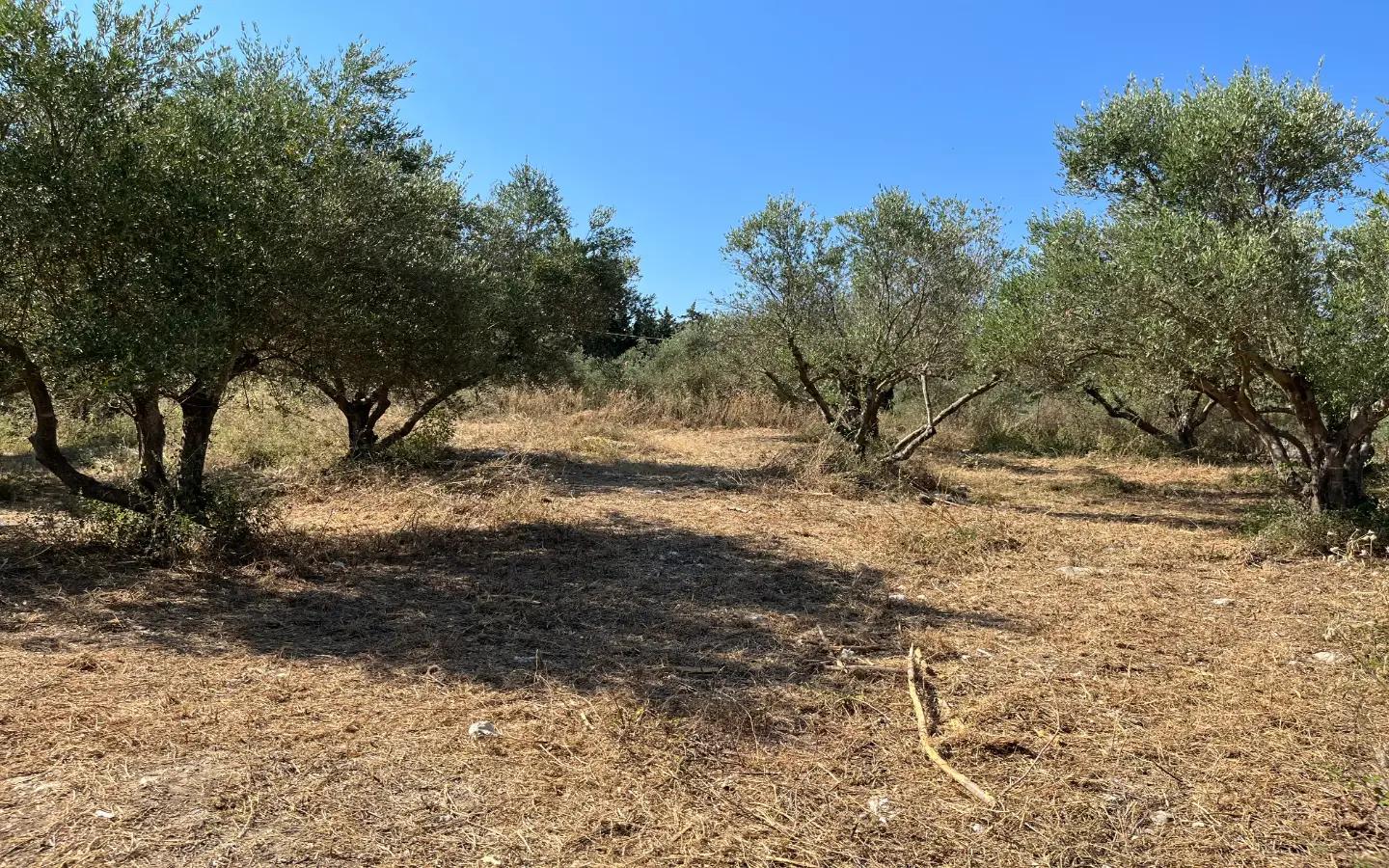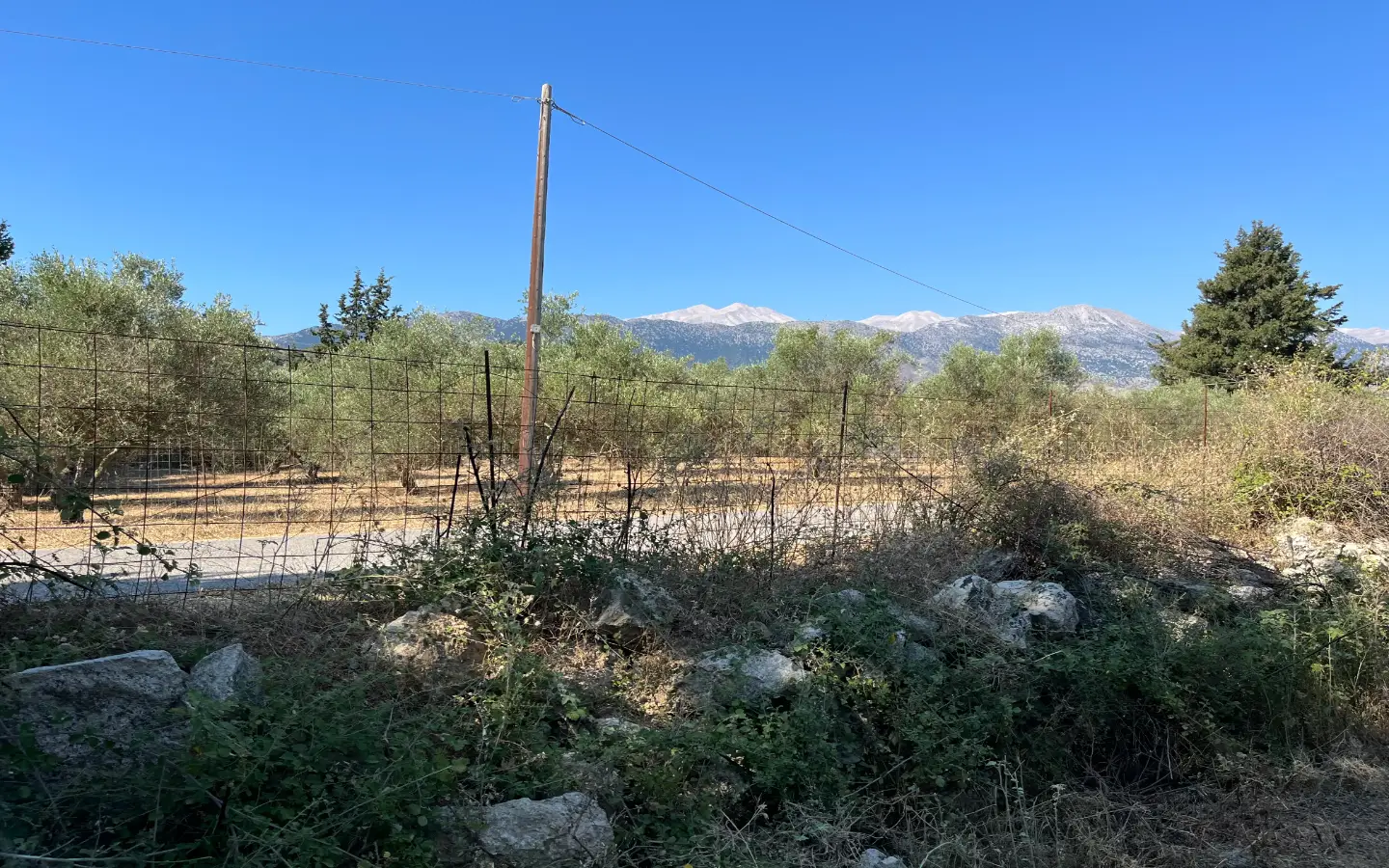Land with Building Permit in Vryses, Apokoronas
- €200,000
- €79/sq.m.
Land with Building Permit in Vryses, Apokoronas
- €200,000
- €79/sq.m.
Description
This stunning building plot is a rare and unique find, situated in one of the most picturesque areas of Apokoronas, surrounded by olive groves and cypresses. It boasts simply outstanding views, offering a 360° panorama of the White Mountains, the lush Apokoronas countryside, and the stunning coastline beyond. This is the ideal plot for your dream villa in this magnificent part of the island.
Plans designed by ARENCOS and a building permit are already in place for the construction of a remarkable villa with a pool. The project can be organized and managed by an experienced and knowledgeable team of experts, ensuring a seamless process from start to finish. Whether you’re looking to create a luxurious private retreat or a beautiful vacation home, this plot offers endless possibilities in an extraordinary location.
This stunning building plot of 2,520 sqm with a building permit already in place, is in a fantastic spot in the area of Apokoronas – in the north-eastern corner of the Chania Prefecture. It is in a quiet area that offers both privacy and tranquillity yet is within easy reach of amenities and is just 1.5 km from Vryses.
Surrounded by the verdant green natural environment, this plot is a beautiful olive grove that enjoys stunning views of the White Mountains. Mainly flat, it is easy to build on and a permit for a single-storey house of 110.00 sqm with a pool is already in place. There is easy access to the plot which is unspoilt and full of mature olive trees. Both electricity and water are on site.
It really is a stunning piece of beauty and nature that offers total privacy, peace and tranquillity yet is within easy reach of all amenities – it is less than a 10-minute drive to the beautiful beach and crystal clear waters that Georgioupolis is famous for.
Whether you want to build a home or invest in a beautiful piece of property for whatever reason, this plot for sale in Vryses is a place to check out.
Discover more about Chania Land Plots for Sale: How, Where and Why to Invest.
Land with Building Permit in Vryses – Documentation
| Ownership Title - Deeds | |
|---|---|
| Recent Topography Plan | |
| Land Registry | |
| Videos & More Photos Available | |
| Property Valuation Report |
| Available | |
|---|---|
| Under Issuance Proceedings | |
| Not Available |
Property Documentation Availability
Our properties for sale have been thoroughly checked for compliance with our stringent listing policy. This means that all required documents are readily available, ensuring a smooth decision-making process.
We are prepared to assist any third party with the necessary checks, facilitating and accelerating the real estate transaction for a seamless experience.
Property Viewing Agreement & GDPR Notice
To share with you the above documents, you must request and sign an official Property Viewing Agreement.
We may process your data based on your consent, for the performance of a contract or as necessary for our legitimate interests, including for responding to your property enquiries following your preferences as further described herein (Art. 6 (1) (a), (b) and (f) GDPR).
Highlights
- Located Outside the Village’s Building Boundaries
- Build Approval: 186.00 sq.m.
- Gradient: flat
- Max. build. height: 7.5 m
- Max. build. levels: 2
- Views: Countryside and olive groove views
- 4 minutes drive from the village of Kalyves
- Accessibility: Excellent
- Orientation: South-East
- Sides on the road: 1
- Current use: olive grove
Location Description
This lovely sloping plot of 2,520 sqm is situated in a great position surrounded by a variety of trees including olives and cypresses, and enjoys total privacy, peace and quiet. The plot is just a 4 minutes drive from the village of Vryses and 35 minutes by car from Chania and Rethymnon. Within the same landscape at a distance of 800m, there is a small taverna that attracts and serves tourists and locals.
Discover what it’s like to live and invest in the Apokoronas area by exploring our comprehensive Living in Apokoronas Guide.
A Vivid Canvas of True Natural Splendour
Maybe less known than the famous Almirida and Georgioupoli sea-side resorts, the village of Vryses definitely deserves a visit. Surrounded by the White Mountains, this blessed-by-nature area with plenty of rivers, caves, vineyards, and olive groves is the ideal place to walk around and explore the province of Apokoronas. Apokoronas’ magnificent surroundings and interesting architecture have endowed Vrisses with unparalleled beauty.
Vryses village is located at an altitude of 62 meters, 30 Km southeast of Chania, close to the national road that connects Chania to Rethymno and on the road that leads over the foothills to the Imbros Gorge (about 30 30-minute drive) and to Chora Sfakion on the south coast (about 45 minutes drive).
The name of the village, which means water fountains, is obviously related to the fact that there were many water fountains in the region in the past. Ideally nested at the foot of the White Mountains, Vrisses boasts an exceptional rugged beauty in the area of Apokoronas.
As soon as you approach Vryses you are impressed, transported… in space and time: its narrow streets, its houses of traditional architecture inspired by the surrounding countryside of Apokoronas, its church its old olive mills… If your eyes have had their fill, then your body will be able to get some exercise with the multitude of outdoor activities adapted to the area around the village.
Vryses Roman Bridge
Three small, yet wonderful rivers flow through the village of Vrisses: Boutakas, Vrissianos and Farmakera. Springing from the White Mountains, they carve, wind and splash their way through small ravines and gorges.
From its source, the Vrissianos flows eastwards, carving its way through the slopes of the Apokoronas, passing on the way stunning landscapes of rocky cliffs, green olive groves, and abundant wildlife. Here and there are traces of human life: settlements built of stone, Venetian and Minoan remains and several old bridges.
The best of these is the “Kamara”, bridge, dating back to the Greco-Roman period (300 BC to 300 AD). The bridge is one of the oldest on the island of Crete and it was an important connection point to facilitate travel on the old route from the north artery of Crete known later in the Venetian period as the Royal path (1645 – 1669 AD). This region is called Greek Kamara and it is located next to the church of St. Nicholas, in the north of the road that passes through Vrisses.
The bridge, which is used until nowadays, is a remarkable architectural construction. The fact that the arch (raised 6.4 meters above the river) was exclusively built with boulders without connecting mud is incredible.

real estate services dedicated to your needs
Key Distances & Property Features
| Closest Beach: 7.5 km | Chania Airport: 40.0 km | Chania Old Town: 32.0 km |
| Souda Port: 24.0 km | National Road: 3.5 km | Local Amenities: 1.5 km |
| Restaurant: 2.5 km | Sea Views: No | Outdoor Activities: Yes |
| Utilities Installed: Yes | Fuel Station: 3.5 km | Olive Trees: Yes (40) |
Local Attractions & Activities
Hiking, Churches, Winery Tours, Safari Tours, Byzantine Monuments, Mountain Biking, Trekking, Horse Riding, and Archaeological Sites.

Local Services & Amenities
Bank/ATM, Post Office, Gas Station, Chania Bus Service, Pastry Shop, Cafes, Restaurants, Pharmacy, Grocery, Mini Market.
Property Buyers Expenses
| TYPE | COST |
|---|---|
| Notary Fees (all notary expenses included) | 1 - 1,5% (plus VAT) of property value |
| Transfer Tax | 3% of property value |
| Municipal Tax | 3% of the Transfer Tax |
| Land Registry Fee | 0,5% |
| Cadastre Fee | 0,65% (plus VAT) of property value |
| Legal & Technical Due Diligence | Expenses vary according to the complexity of the research and the value of the property |
| Technical Due Diligence | Varies in respect to the property aspects |
Property Buyers Expenses
Median Sale Price: 140k
Property Return on Investment: Low
Land prices in the area of Apokoronas continue to accelerate, amidst strong demand from foreign buyers, growing residential construction activity, and continued economic growth in the country.
In Apokoronas land plot prices soared by 12.70% in Q1 2024 from a year earlier, following year-on-year increases of 12.58% in Q4 2023, 12.20% in Q3, 14.10% in Q2, and 12.90% in Q1. It was the fifteenth consecutive quarter of double-digit land plot price growth.
*Median price and number of sales data refer to properties of similar size and type in the area sold by ARENCORES and other real estate offices of trust.
For more detailed information about Akrotiri property asking prices, real estate market facts and statistics you can visit My Place in Chania or Datanalytika.
REDS
Dive into Greek Real Estate Data Sources and Research (REDS), an encompassing resource delving into the intricate nuances of Greek Property Law, Property Ownership, Real Estate Rights, and the Hellenic Cadastre registration process.
This comprehensive guide not only elucidates these fundamental concepts but also addresses crucial gaps in understanding associated liabilities for buyers, sellers, and real estate investors, offering insightful paradigms and invaluable tips.

Property Documents
Details
Updated on June 14, 2024 at 8:01 am-
Property ID PC1900
-
Price €200,000
-
Property Size 2520 sq.m.
-
Property Type Plots for Sale in Chania
-
Property Status For Sale
Additional details
-
The area is under cadastral registration by the National Cadastre Yes
-
Located outside Protected Areas (Natura 2000) Government Gazette 60A/31-3-2011 as amended by Decree 50743/11-12-2017, Government Gazette 4432B/15-12-2017 Yes
-
There are mature olive trees within and along the facade of the field Yes
-
The plot is crossed by overhead high-voltage transmission lines of the electricity distribution system No
-
The plot is located outside the building boundaries of the village True
-
Build. approval 186.00 sq.m.
-
The property holds a Forestry Authority Certificate True (Marked as forest: 0 m²)
Address
Open on Google Maps-
Address: Vrysses Apokoronas Municipality, Chania
-
City: Vrysses
-
State/county: Chania
-
Zip/Postal Code: 73007
-
Area: Apokoronas
Floor Plans
- Size: 687 kb
Description:
To access the Topographic Survey or any other information available in the property's folder, please request and sign a Property Viewing Agreement. Additionally, you will need to provide a copy of your valid ID or passport. This ensures that all necessary protocols are followed and that the property information is shared securely and responsibly.
Overview
- PC1900
- Plots for Sale in Chania
- 2520 sq.m.
